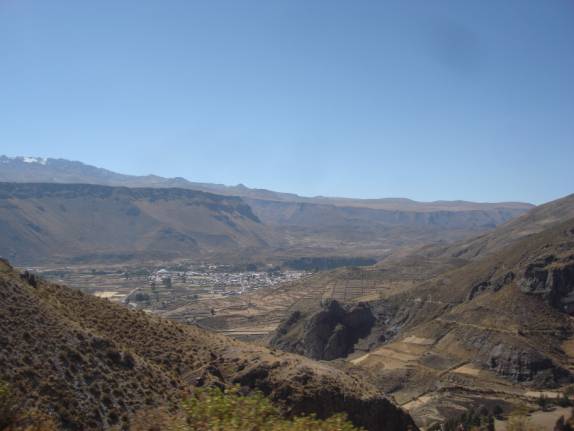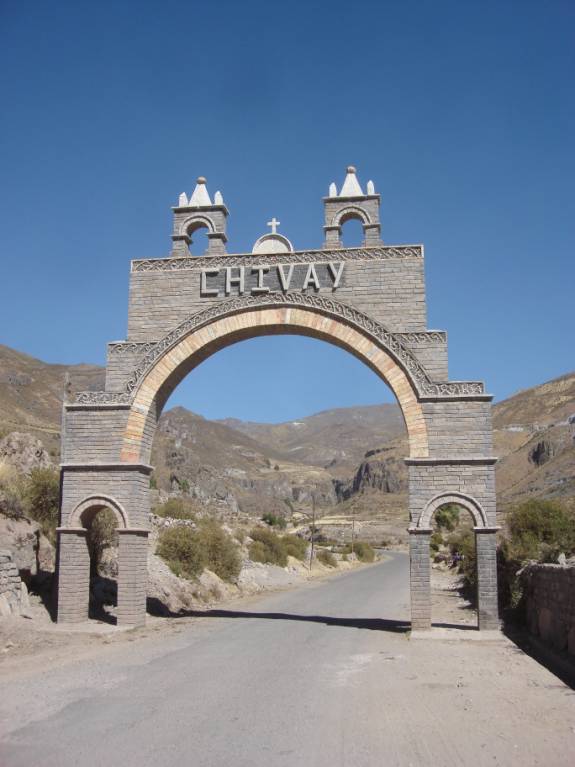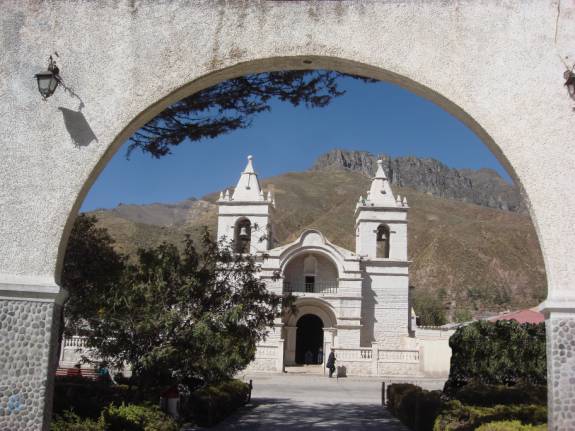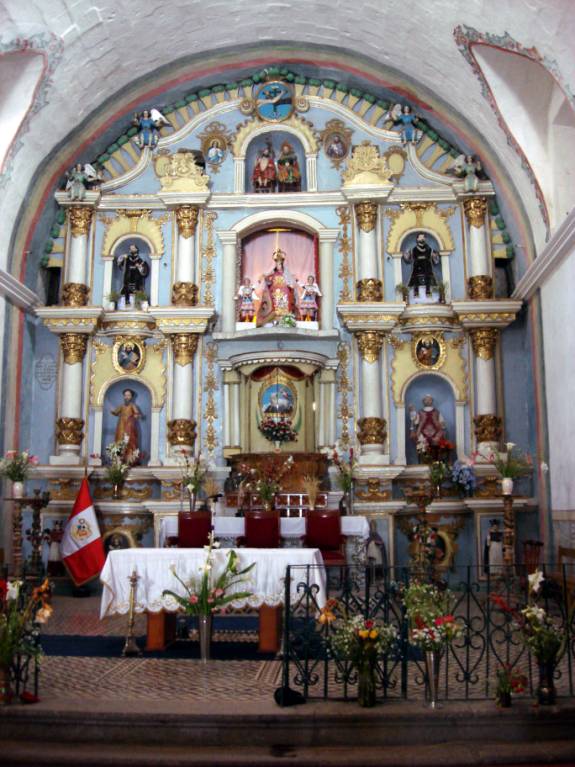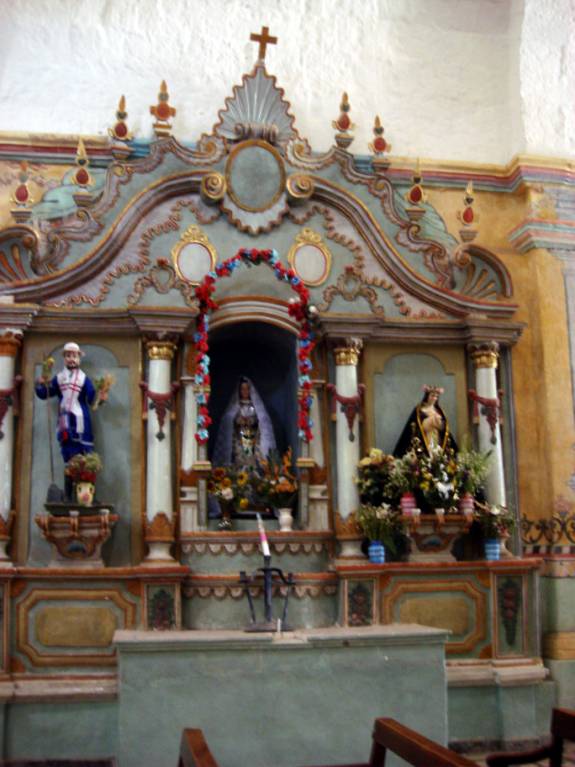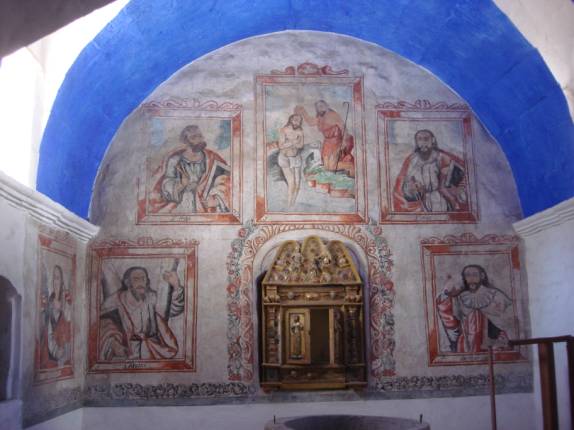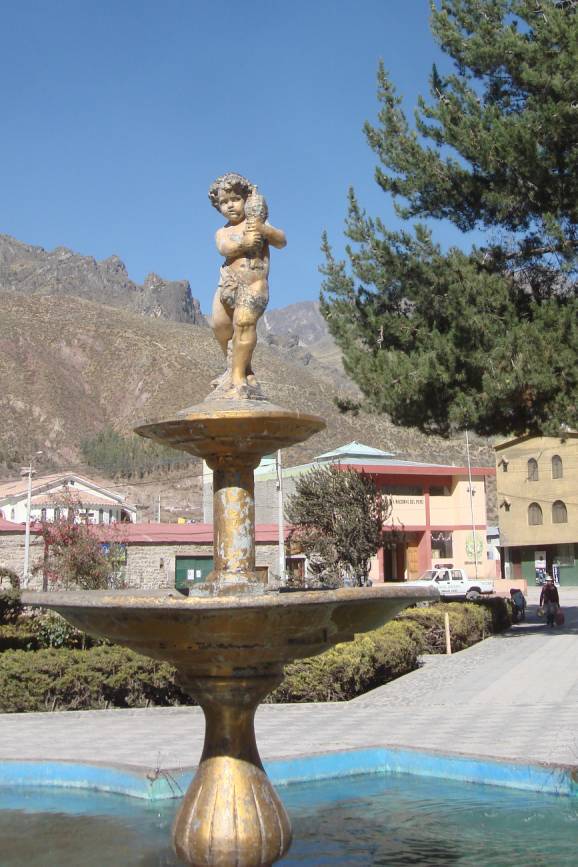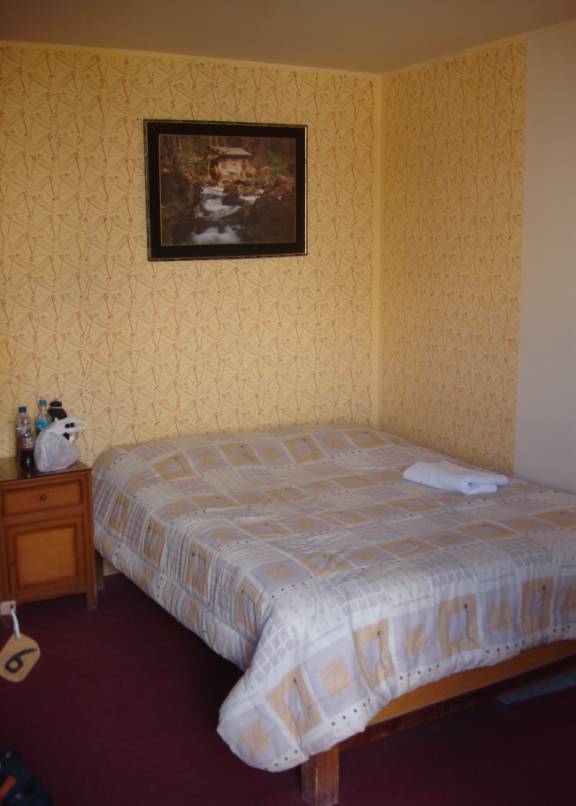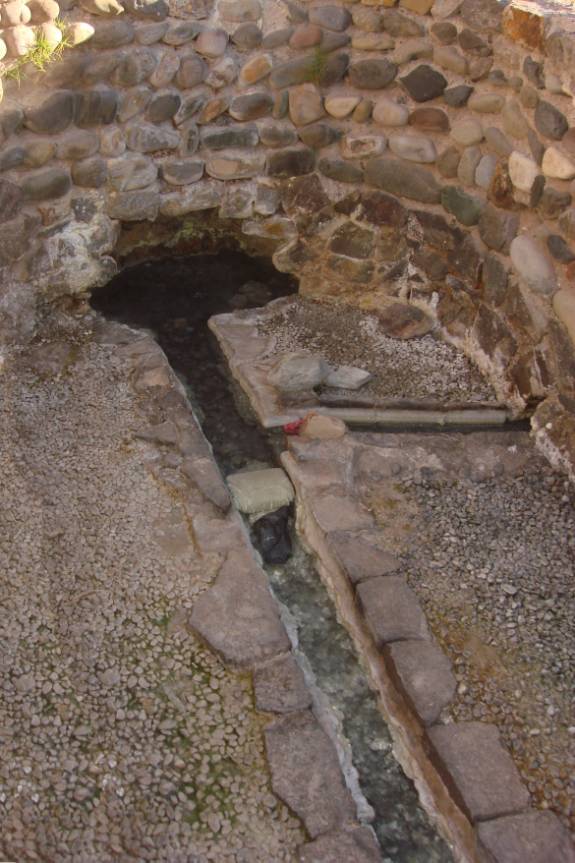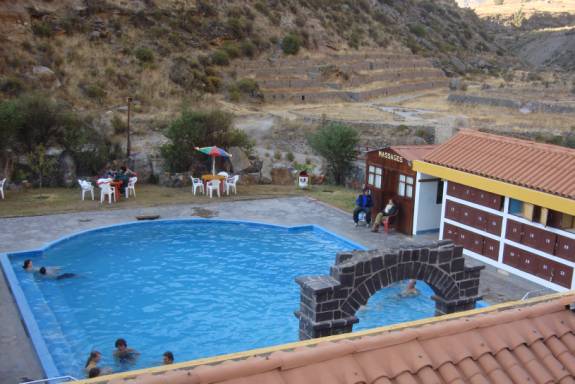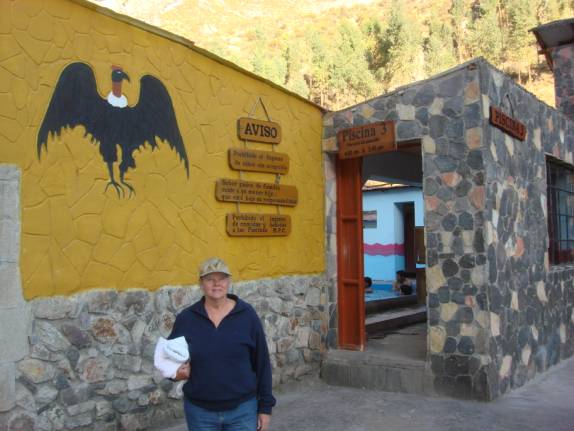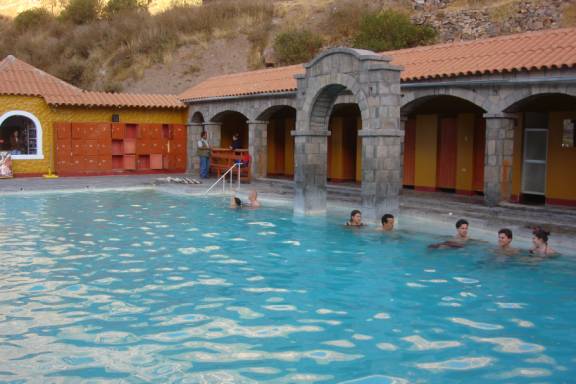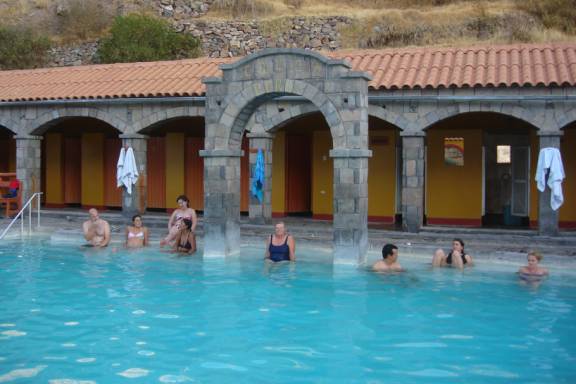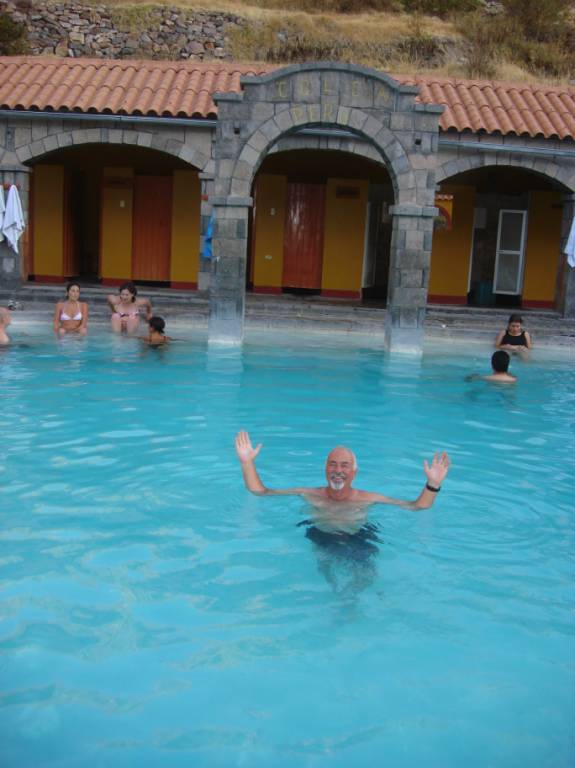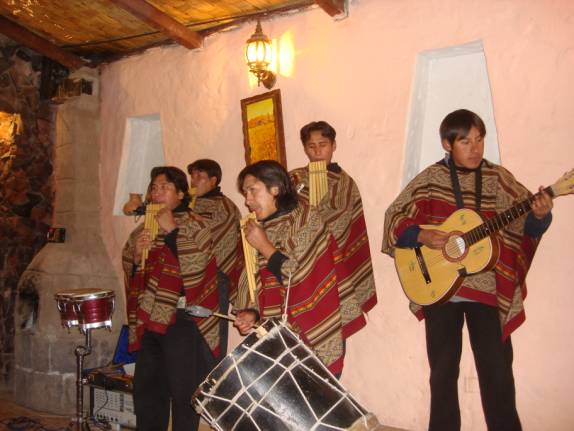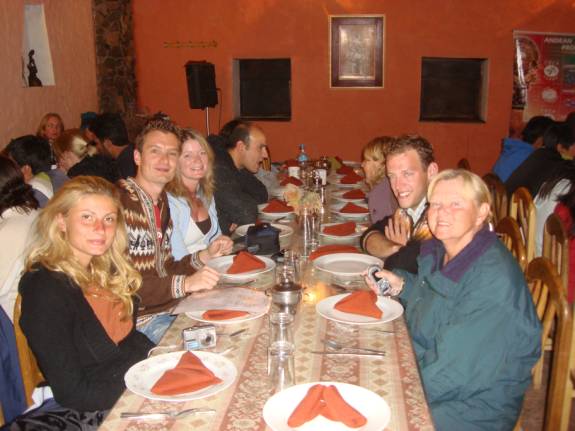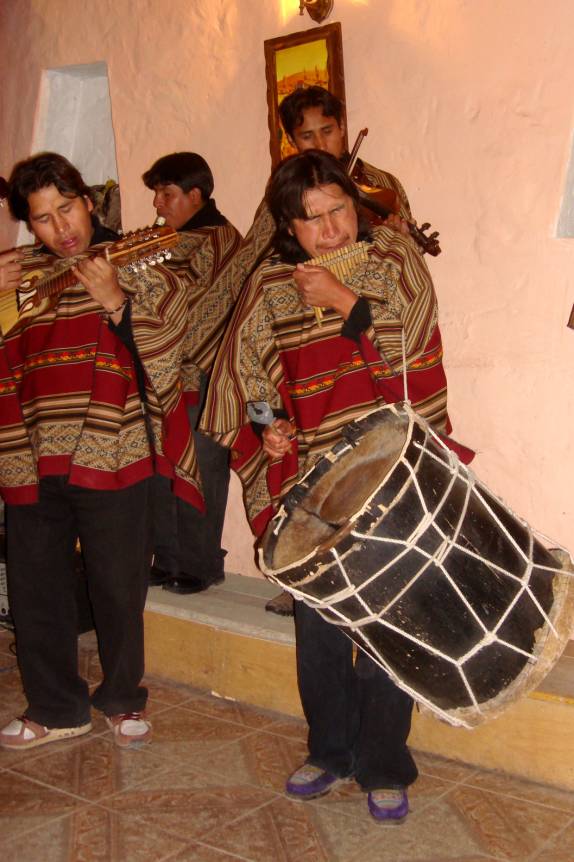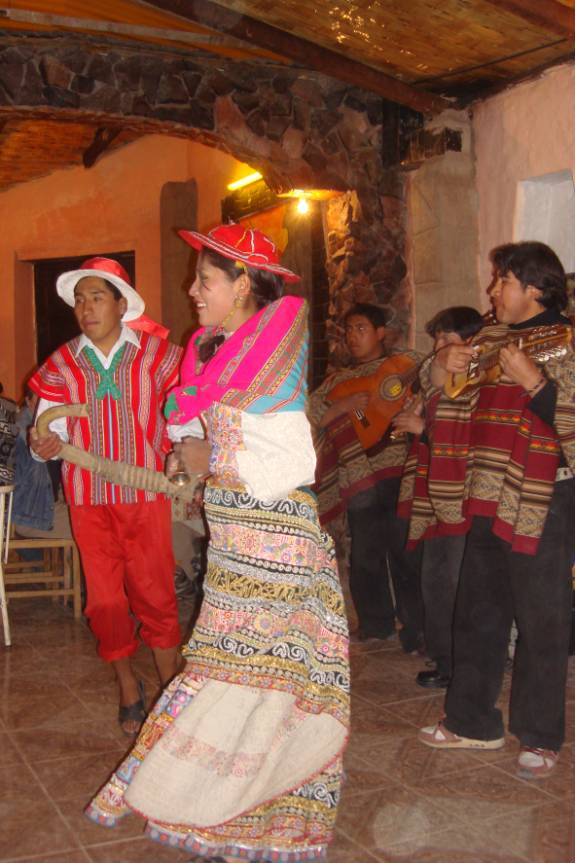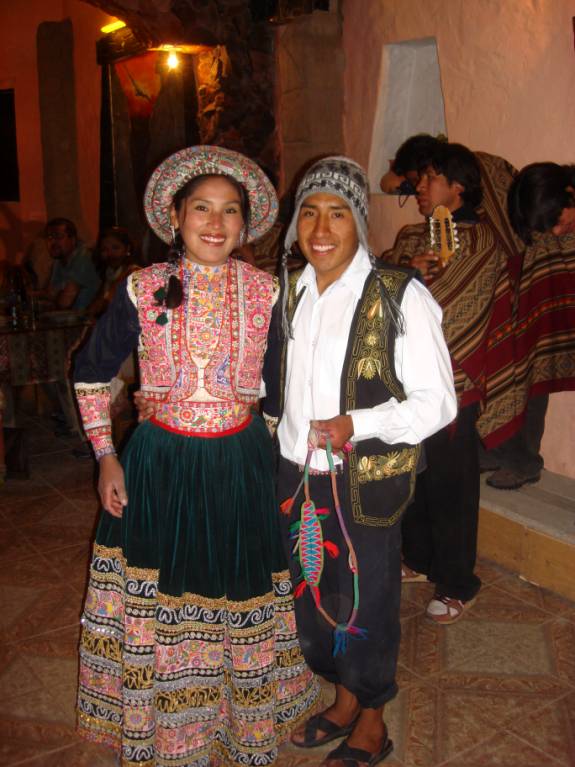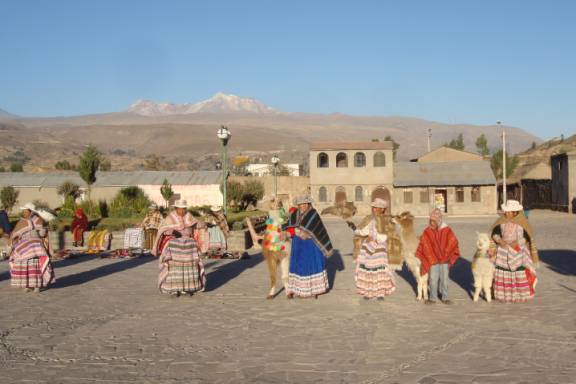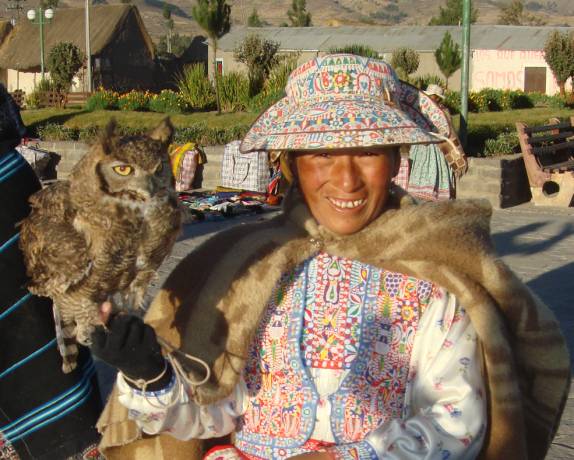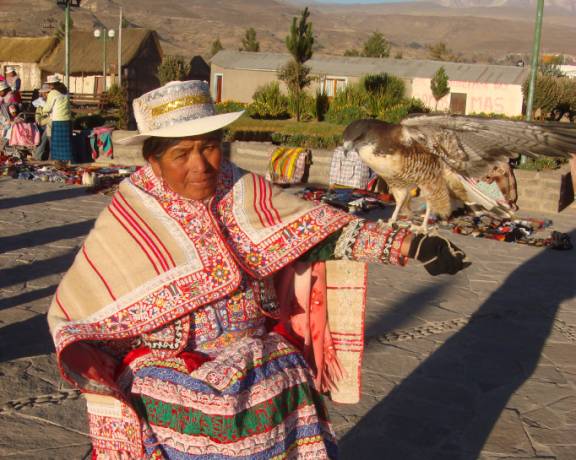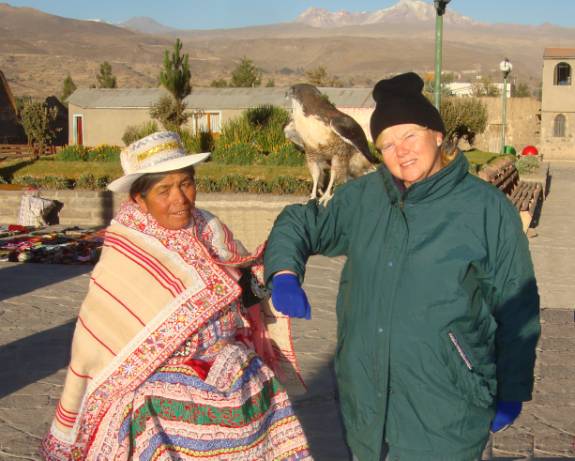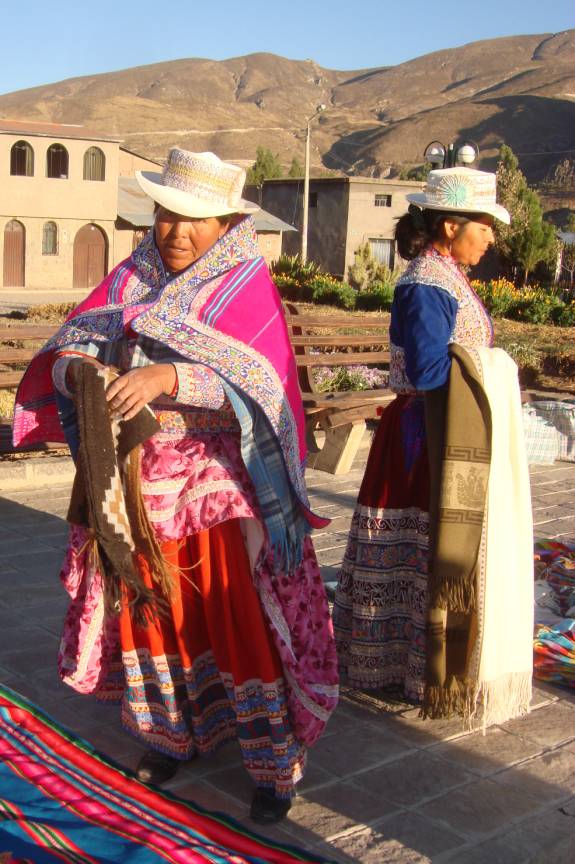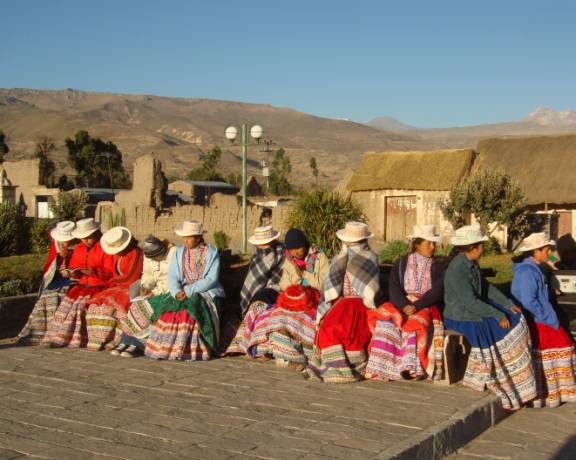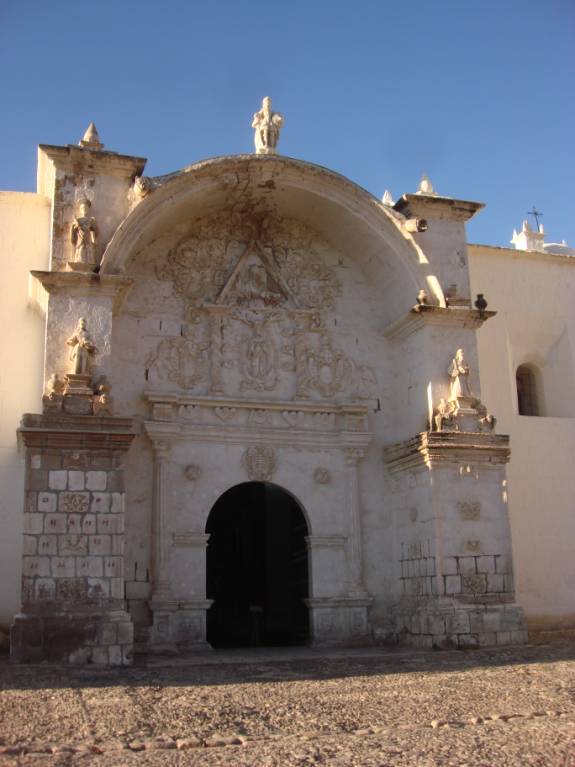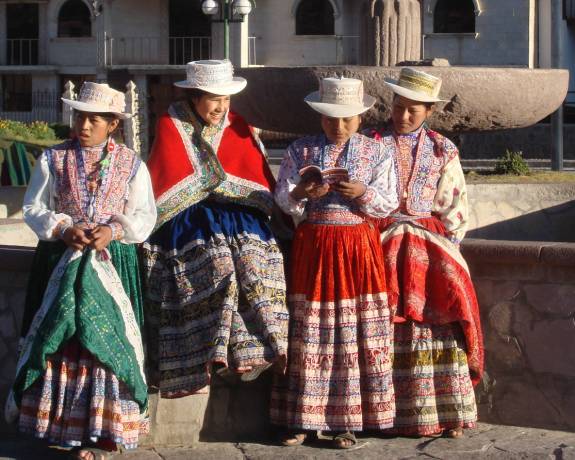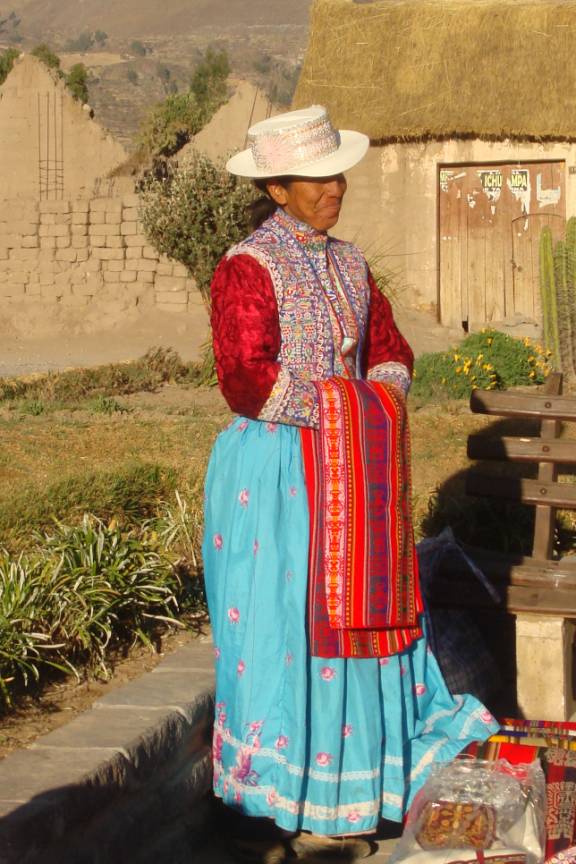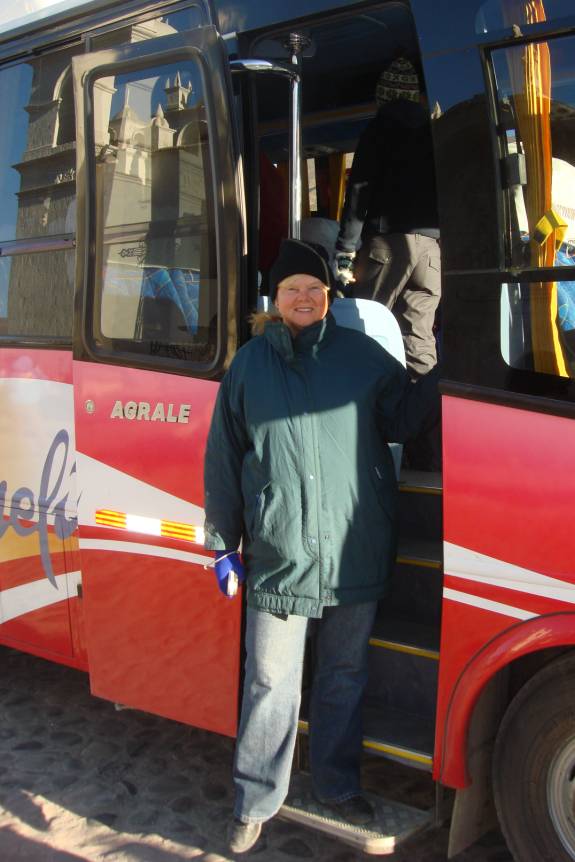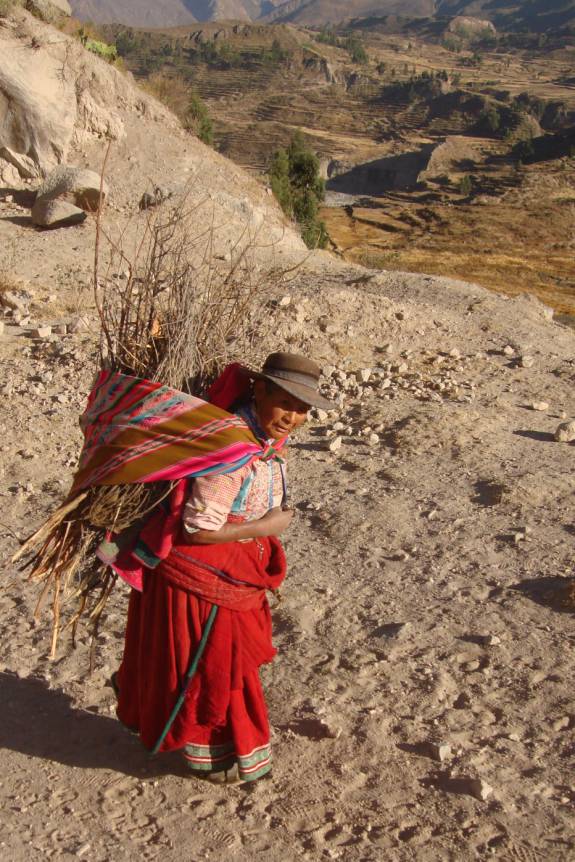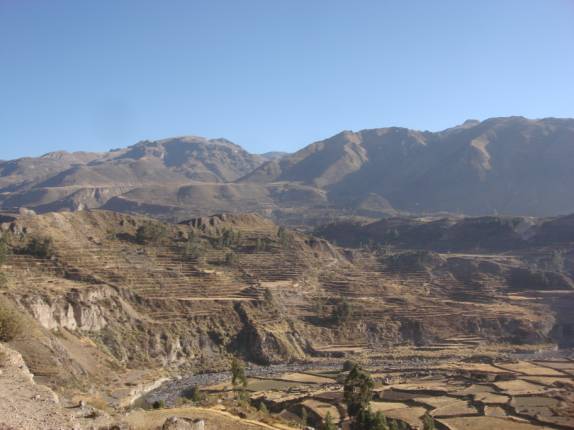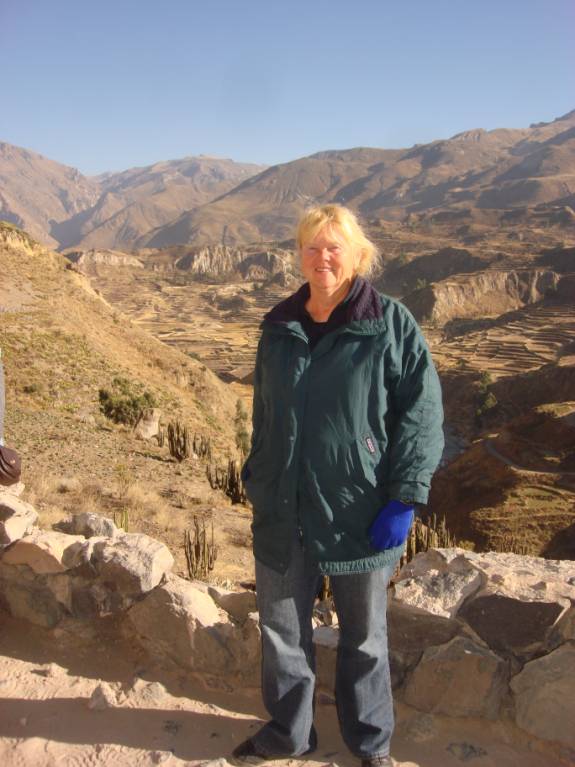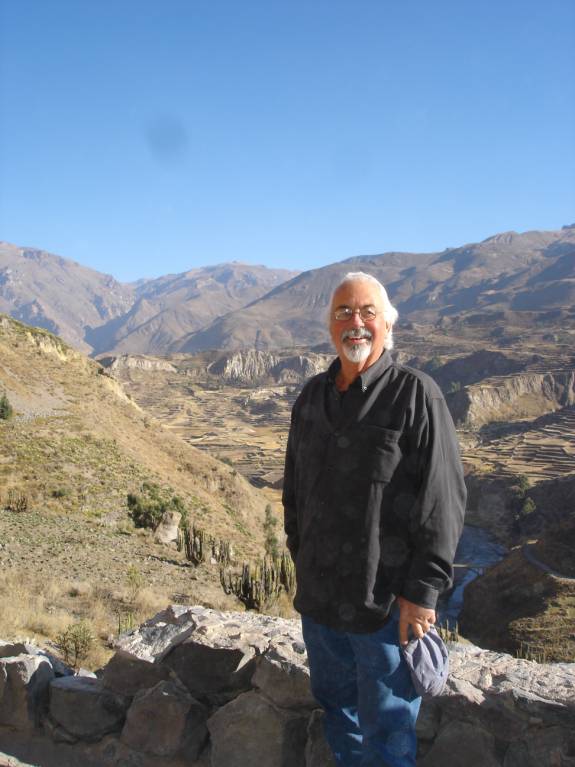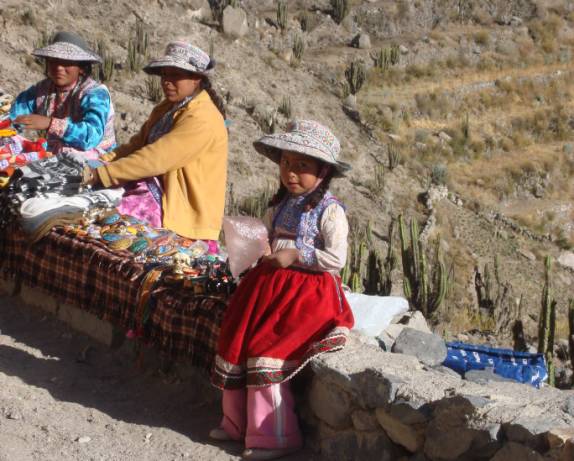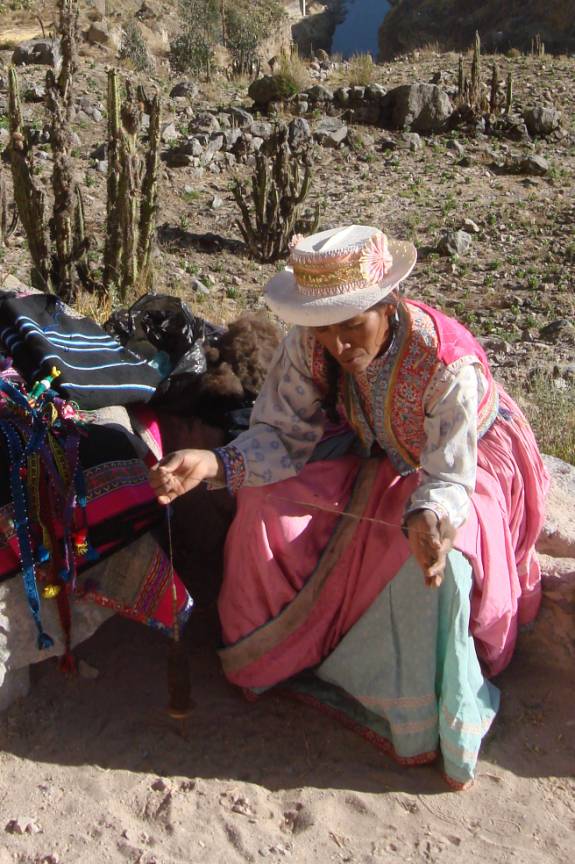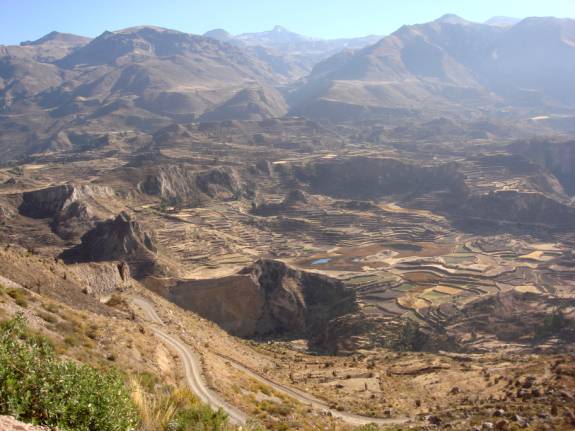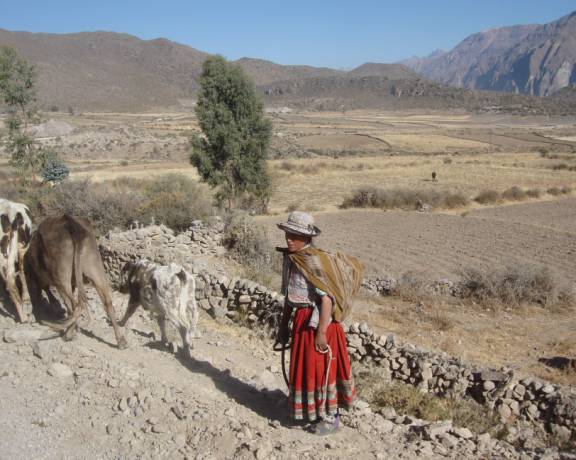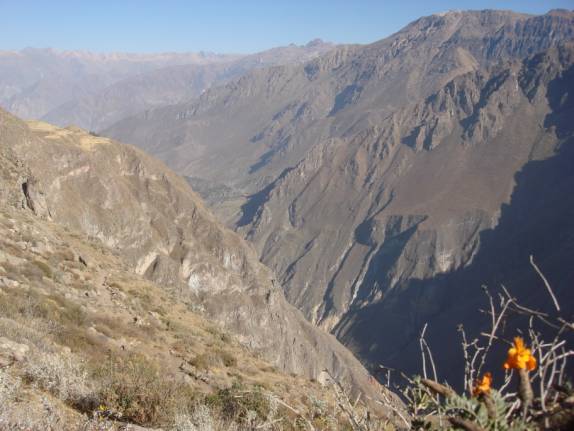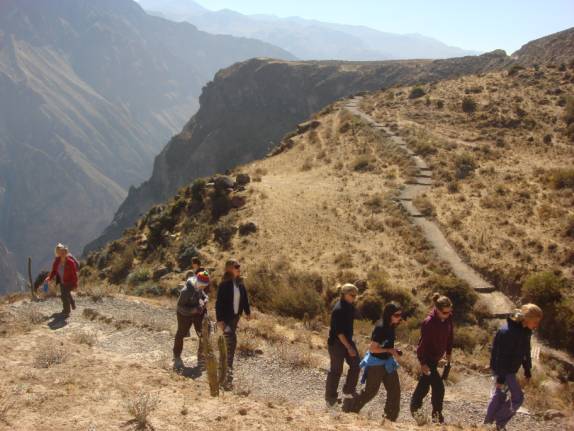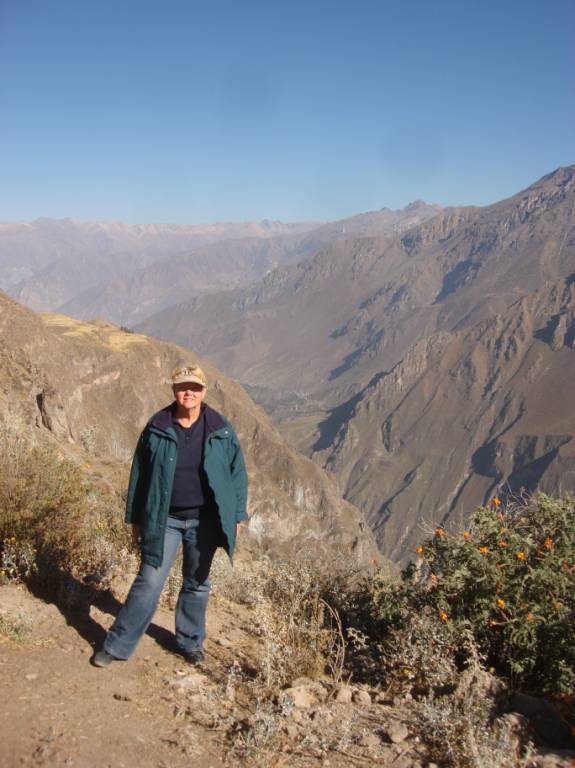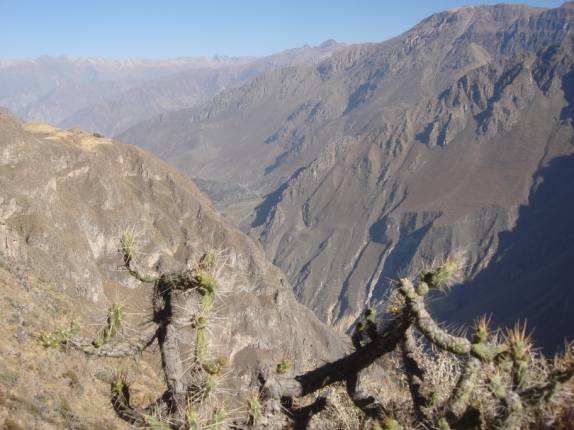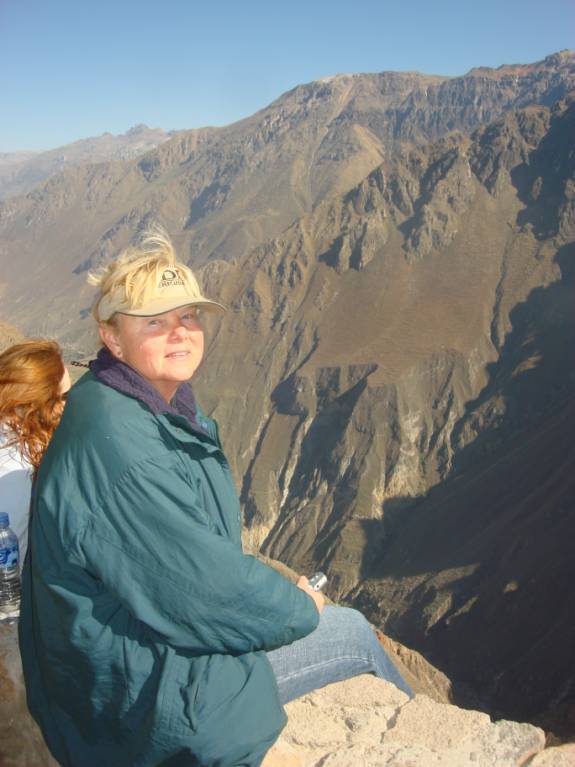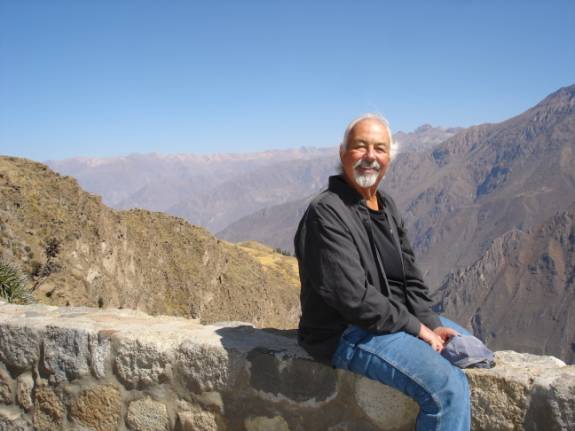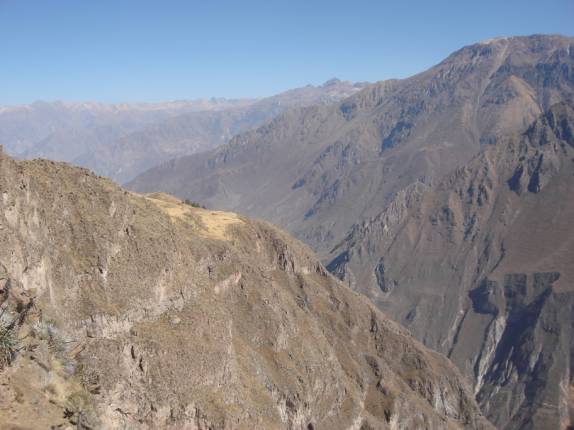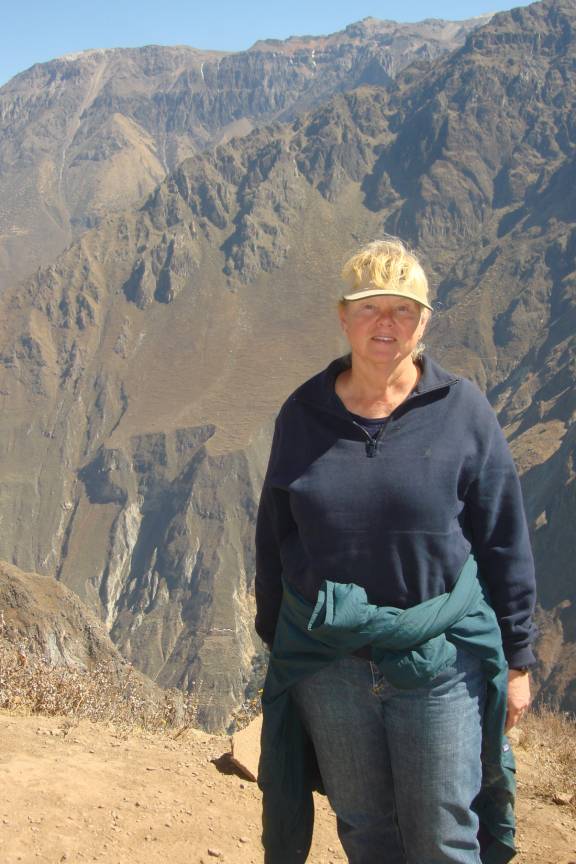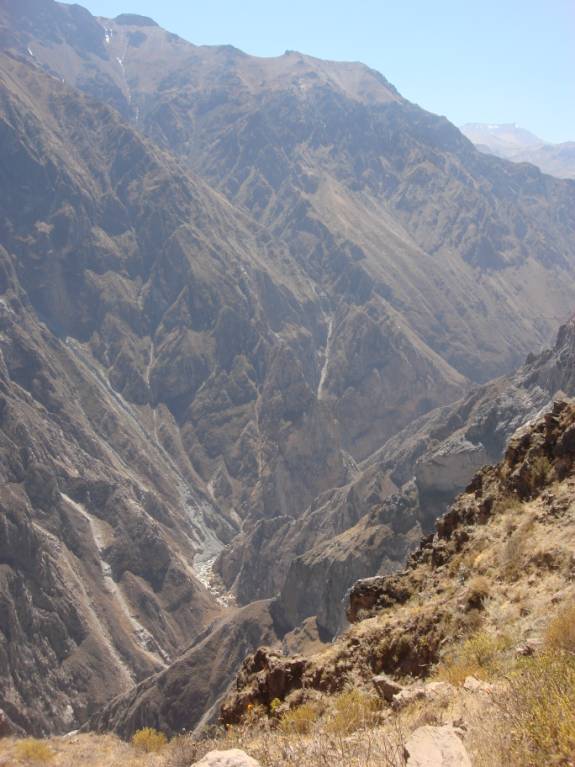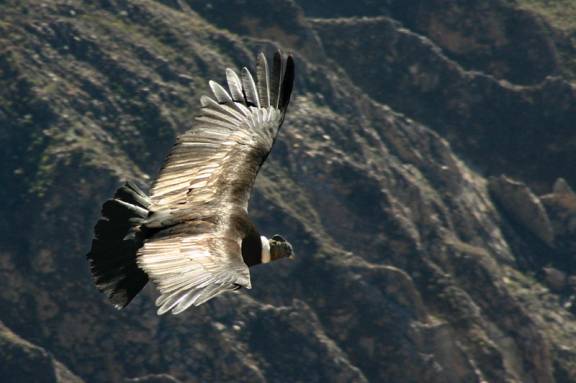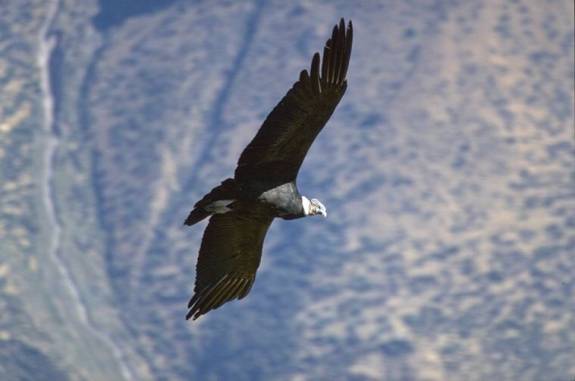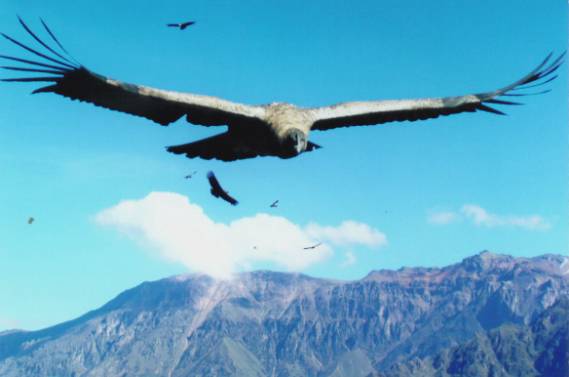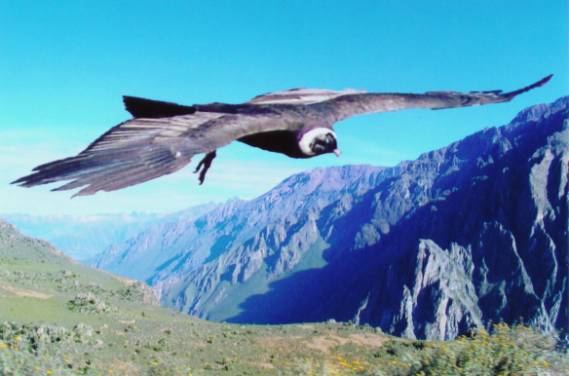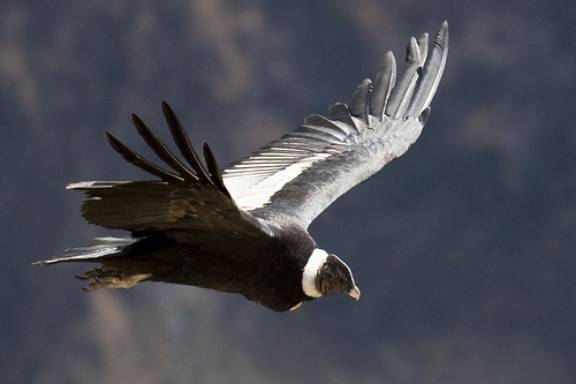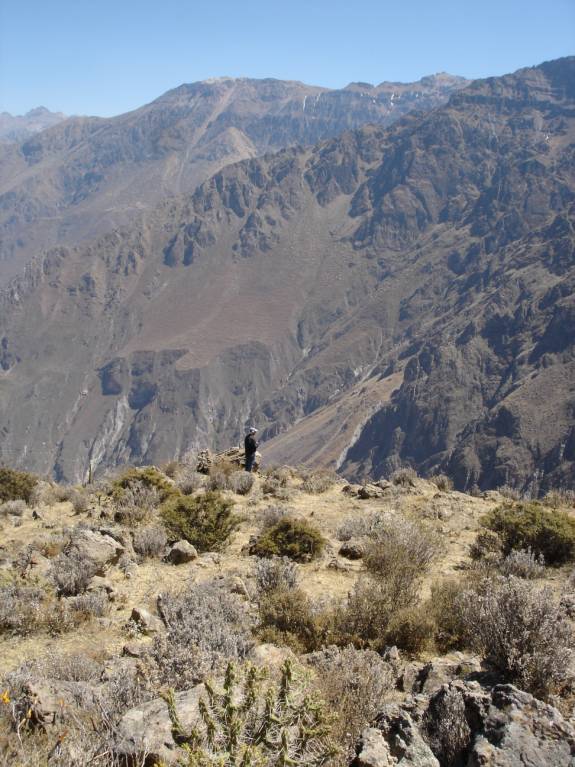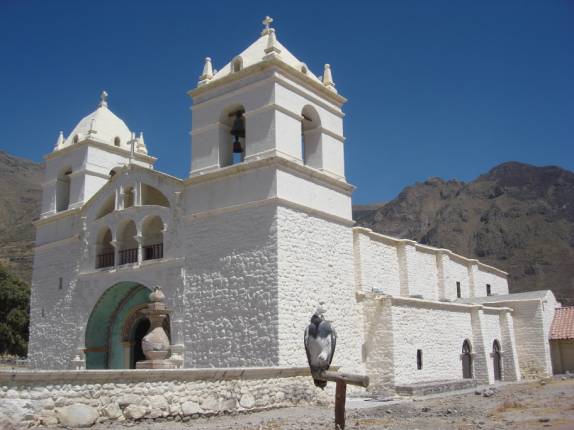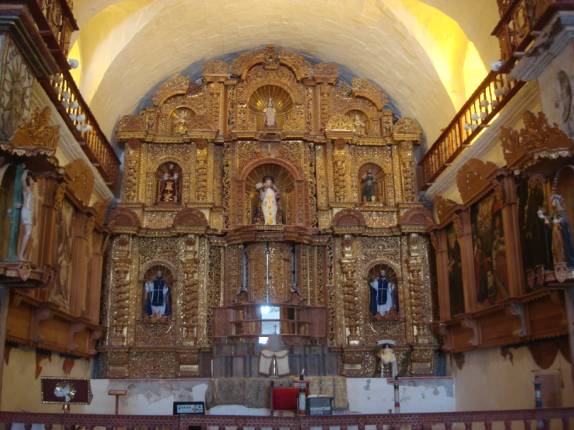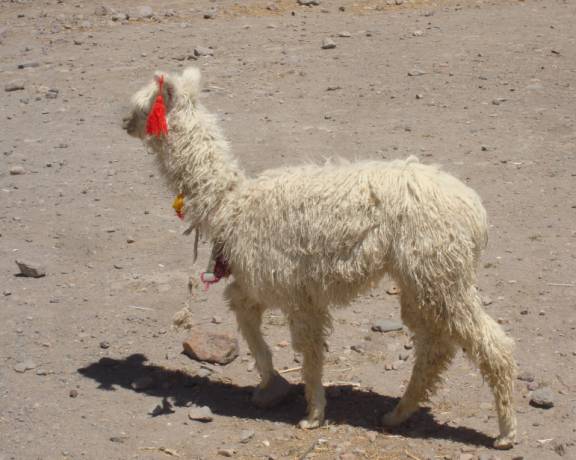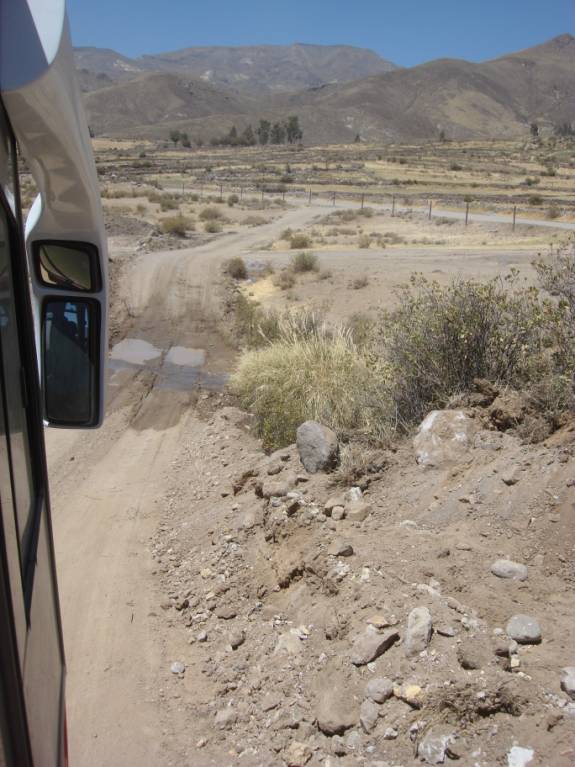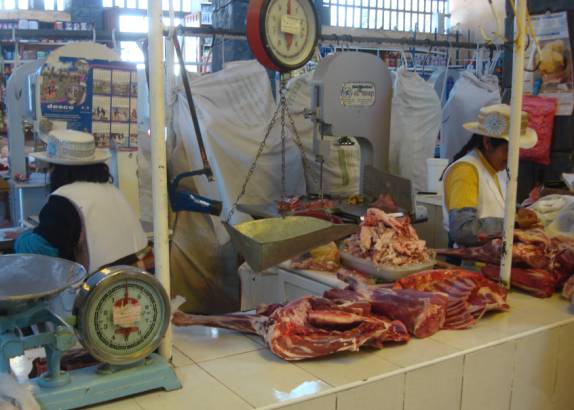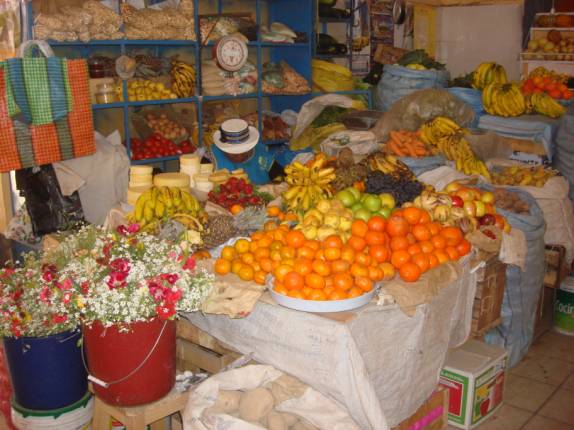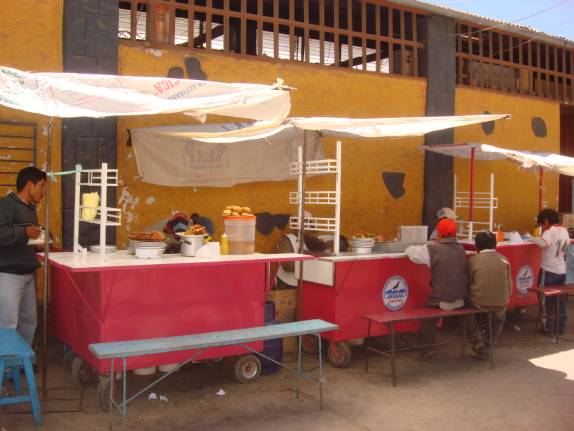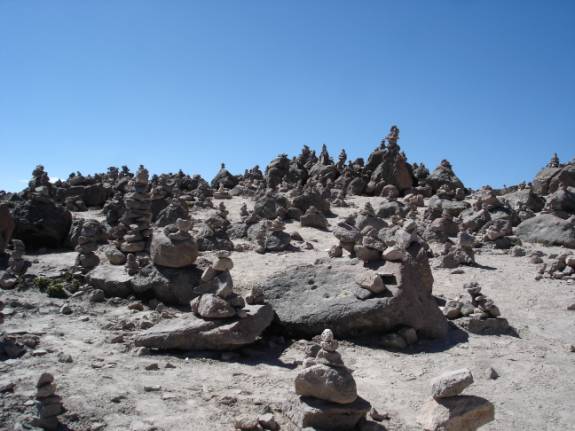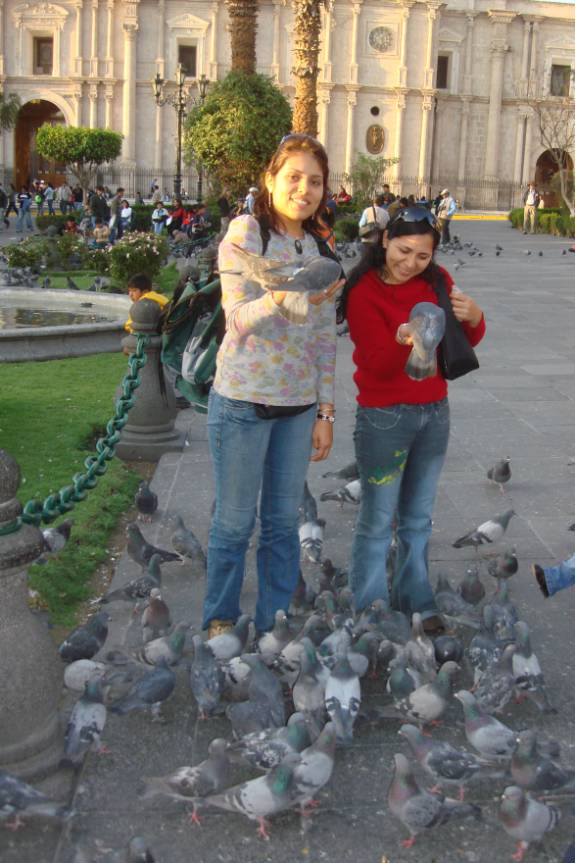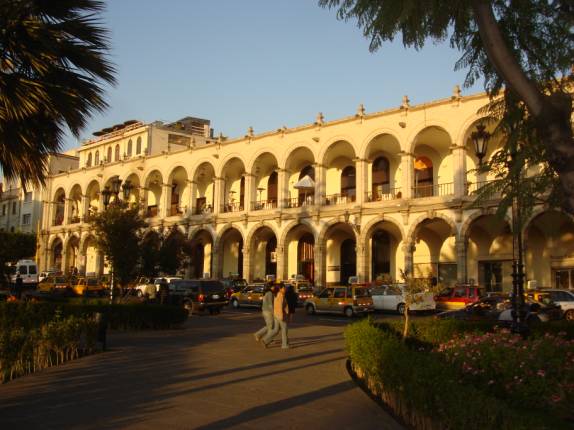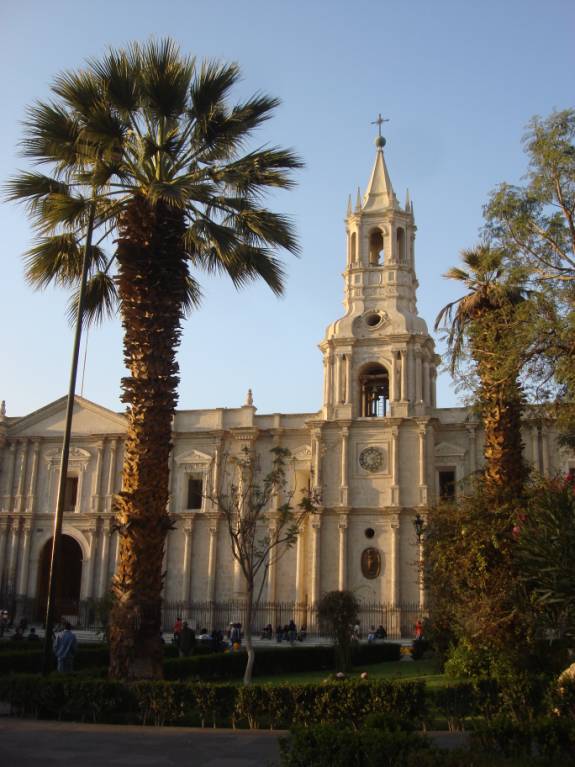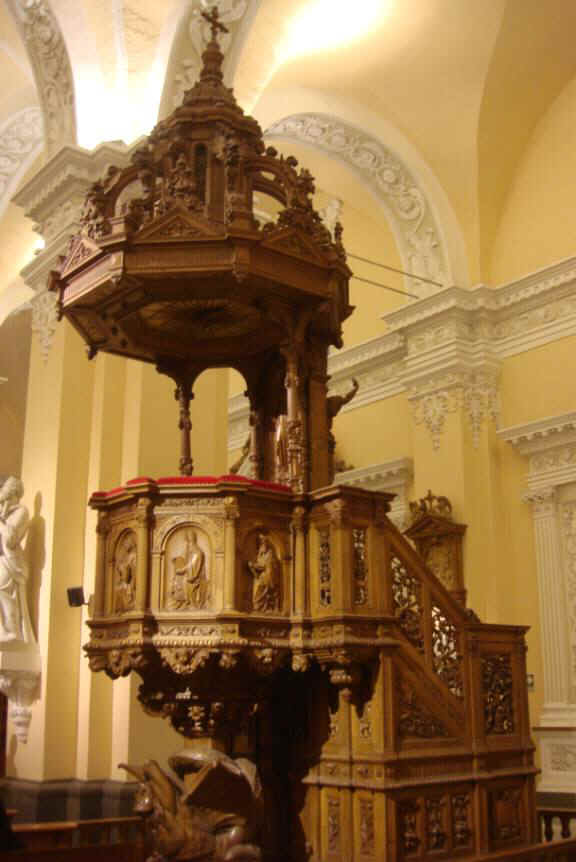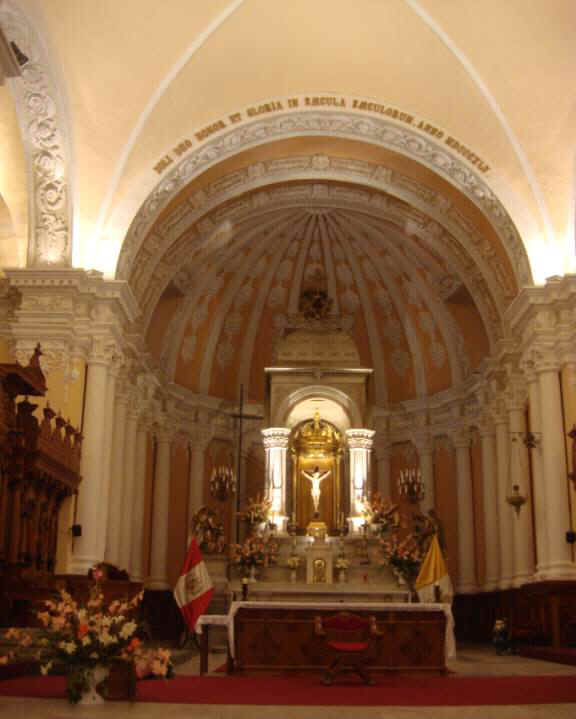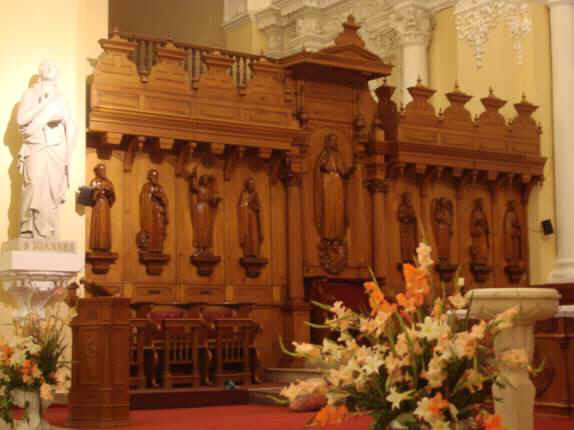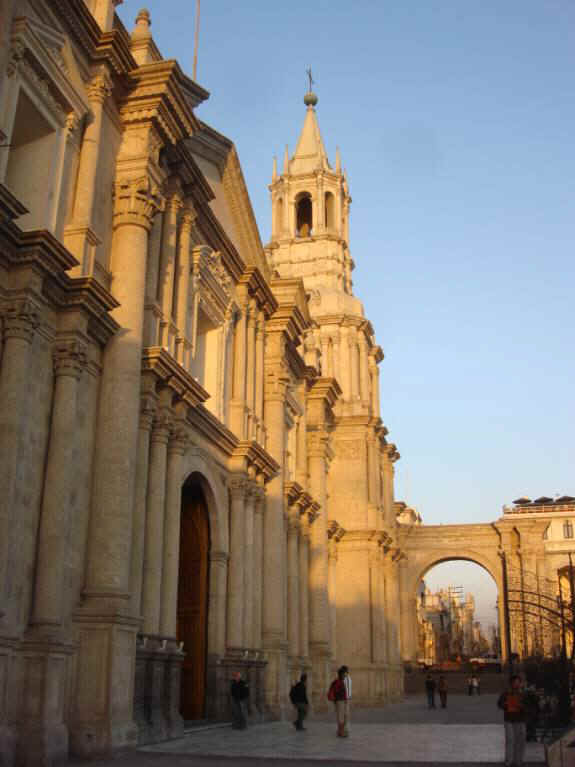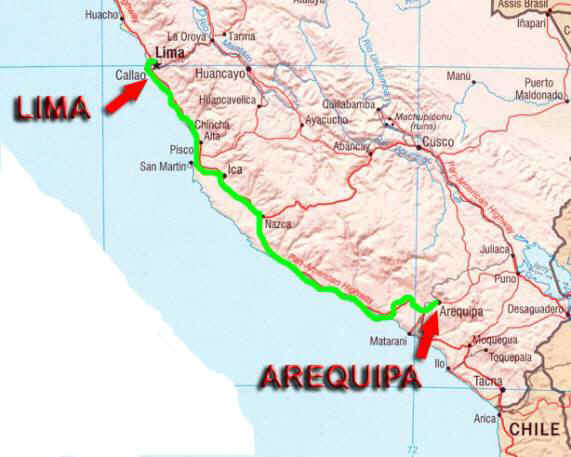|
|
|
|
Site Index:
|
UPDATE#26
9/02pm
thru 9/03
Howdy
Everybody, The
adventures of 2008 from 1/1/08 through the morning of 09/02/08 have been
published on the website. We
continue with the latest edition. UPDATE
2008 #26 09/02/08 PM thru
09/03/08 At
last update, we had departed
Arequipa,
Peru for the village of
Chivay
near the Colca Canyon. This edition picks up where we left off on midday
Tuesday. 09/02/08
AFTERNOON TUESDAY
AREQUIPA - CHIVAY HAPPY BIRTHDAY to CHRIS LAW
(Judy’s second of three sons)
At this update edition, we are resuming our tour to the town of Chivay
and the Colca Canyon. The events of the today’s morning are contained in the last
update, #25.
By early afternoon, our tour bus was winding down
through the mountain passes into the Colca River Valley area.
Farming terraces dot the mountains surrounding the town of Chivay.
A huge, stone block archway welcomed us to the entrance of the town.
Here, they collected the admission fee ($13pp US) and issued a tourist
ticket permitting us to visit the local area and the canyon regions.
A monument commemorates the Andean Condors that soar in their natural
habitat along the Colca Canyon.
Little boy blue, come blow your horn
The sheep's in the meadow, the cow's in the corn
Where is that boy who looks after the sheep?
Under the haystack fast asleep
Will you wake him? Oh no, not I
For if I do he will surely cry
… nursery rhyme from the middle ages.
The tour company had chosen an overpriced tourist trap at the edge of
town for their lunch stop. We
decided to explore the town on our own and find a more economical and
interesting place for lunch. Our
walk to the center brought us to the Plaza de Armas and this arched view of the
local Catholic Church.
Our sightseeing had been much more rewarding than that tourist buffet
would have been. Because we used our hour strolling around, we had to grab
some quick snacks from a tienda
(small store) to tide us over till later. At
3:30pm, the tour bus continued to our designated hostal where we were assigned
to an upstairs room. There were no
signs so I still have no idea what the name of the place was.
Although far from being fancy, the simple, clean room was okay and would
allow us some much needed rest.
Except for a wealthy Brazilian couple that elected
to pay a king’s ransom to stay at the very upscale, Casa Andina Hotel, the
rest of our tour group was content to stay in this hostal that was included in
the reasonable price for the excursion tour.
As prearranged, our group met at the lobby for the 20-minute bus ride to
the La Caldera Aguas Termales (hot springs).
This is the manantial (spring) and is the source of
the mineral laden waters that are claimed to have curative properties.
Thermal energy is extracted from the waters as they pass over these coils
before being diverted into the bathing areas.
For
about $4 each, we enjoyed a wonderful time in the hot pools.
There were numerous pools, both inside and outside, to choose from.
If memory serves me, there were about 7 separate pool areas.
Our choice was this wonderful pool with an archway.
Lockers, changing rooms, and hot showers were co-located for our
convenience.
For 1-˝ hours, we thoroughly enjoyed soaking away our aches and pains in
the 100+ degree F, mineral waters; alas, we were miraculously healed.
It had gotten pretty dark by the time we showered and dried off.
The rapidly cooling, night air chilled us quickly as we waited patiently
for our bus to pick us up at 6:30p.
With only a little time at the hostal, we dried off and put on dry
clothes. At 7:15p, the bus drove us
to their chosen Restaurant and Peńa
(folkloric dance place).
Once again, Judy and I were the only USA travelers in the entire group.
The gal across from Judy came from Naples, Italy; the other three facing
us were traveling from Holland. Most
of the others were from various European, British, Irish, and South American
countries.
Although we came here primarily for the camaraderie
and to watch the dances, the food was quite enjoyable.
Judy selected the Lomo Saltado,
which is a Peruvian specialty made like stir-fry and using beef strips, onions,
and tomatoes blended in a light sauce. The Sopa
de Casa
(house soup) featured quinoa grains cooked in chicken stock with diced
vegetables.
The band played a nice selection of Andean music featuring flutes,
panpipes, drums, and strings. Note
that the little guitar/ukulele instrument appears to have 10 tuning knobs and
strings to strum out their tunes.
At the Peńa, the dance couple performed a
variety of indigenously inspired dances.
Numerous costume changes brought renewed interest with each colorful
variation.
Probably working solely for tips, the band and the dance team frequently
passed the hat seeking generous gratuities.
By the time we left the restaurant, the temperature had really dropped.
We had thought that we would ride the bus both ways, however, the plan
was for everyone to walk back to the hostal.
If we had known earlier, we would have worn much warmer clothes from the
hostal. In any case, the walk back
was both pleasant and invigorating. 09/03/08 WEDNESDAY CHIVAY
– YANQUE – CRUZ DEL CONDOR – MACA – AREQUIPA – BUS
TO LIMA That pesky alarm startled us awake at the
ungodly hour of 5am. Their paltry
excuse for a breakfast consisted of weak tea, bread, butter, and jam.
For the price though, I guess I shouldn’t complain.
Fortunately, I had brought some cheese, wafer crackers, and lunchmeat to
satisfy our morning hunger. Although
we were all eagerly waiting at 6am, our bus didn’t show up until almost 6:15a.
Our first stop was in the tiny village of Yanque.
The sun was still low and the air was quite chilly.
Eager for some tourist tips, a line of gals had brought various animals
and birds with them hoping for a photo opportunity.
There were llamas, alpacas, owls, falcons, caracara, and hawks.
…El Buho (the owl)
“Birds of a feather stick together”, isn’t that an old
saying? When Judy was in business,
she was sometimes nicknamed “the hawk”, because she never missed
anything that was going on with the employees. The bird, however, is probably a Caracara.
This group of brightly clad gals was supposed to do some dances for us;
however, their sound equipment was on the fritz so they had no music.
Oh well, they were pretty to look at.
Yeh, sure it’s cold out. I
think we’d better get back on the bus to warm up.
After all, it is the wintertime here in Peru.
Huge terraces were built to enhance crop productions in this rugged area
of terrain. The technique was well
known and in significant use long before the Inca times.
A single-lane tunnel for vehicle traffic has been cut through this
mountain. The road is made of some
kind of very finely pulverized dirt that turns to flying dust.
The drivers are so blinded by the clouds of dust that they literally feel
their way through. Note the
billowing dust spewing from the tunnel opening.
At the
Mirador de
Coquetito, we
gazed up to the amazing “hanging tombs” or "tumbas colgantes".
The Colca Canyon derives its name Colca
from the holes that dot the cliff face.
The Pre-Inca and Inca peoples primarily used them to bury the deceased of
their royalty and elite classes. Some
of the colcas
were used to store foodstuffs, perhaps as a tribute to the mountain god.
From the point at
Mirador de Antahuilque,
we had an excellent view of the Colca River Valley, the extensive terraces, and
the mysterious lagoons.
Our bus driver let us out at a deep section of the canyon known as Cruz
del Condor.
Hiking along the steep edges of the canyon, our group steadily trod along
a hilly, gravel pathway for about an hour.
From this rock-walled vantage point at the Cruz del Condor viewing area,
we constantly scanned the canyon depths for any indication of the famous Andean
Condors. For nearly two hours, we
eagerly watched and patiently waited for the winged arrival of the giant birds.
…Watching and waiting, watching and waiting, watching and waiting…
Although the views of the deep canyon were magnificently
spectacular, we couldn’t even find a glimpse of the condors.
Vastly disappointed, we had to return to the bus for the prearranged time
to depart. For some unknown reason,
the soaring condors did not choose to grace us with their presence this time.
As we hiked away from the canyon walls, many of the stubbly cacti were in
gorgeous bloom.
Our driver followed up on the rumor that the condors may be flying in
another section of the canyon. We
jolted and bumped along the rough road to the suspected area.
Although we hadn’t spotted any condors yet, we
did get to see these two feisty bulls tangling fiercely.
Who knows what the spat was about, one can only guess that it was a
territorial issue. They clashed for
some time, both seemed to settle down before either got really hurt.
A lot of the rushing waters of the Colca River have been diverted through
this complex aqueduct. Providing an
abundant water source for the surrounding areas, the extensive project has
raised significant, ecological controversy about altering the natural flow of
the river.
A lone condor was spotted in the distance. Hurriedly, everyone was back
to the bus to continue in search of the condor’s elusive whereabouts.
Back near the Cruz del Condor point, the driver got word that several
condors had been spotted in the canyon. He
left us closed in the bus while he investigated the rumor.
Someone spotted a condor through the bus window but we were trapped
inside the bus because the tour guide did not know how to open the door.
By the time the driver returned, the optimum moment had passed.
When the doors finally opened, our rapid exit resulted in only a glimpse
of the soaring giant as it flew away down the canyon.
We hiked out to the edge of the canyon hoping for another pass.
Someone said, “Look, there is one”!
Fortunately, Judy successfully captured this photograph of a solitary
condor soaring gracefully through the Colca Canyon near Cruz del Condor.
Great shot, Judy!
Although we did have several other casual sightings over the distant
hills, our actual encounters with the condors were not as close as we had hoped
for. Appreciating that we had seen what we had come to see, we were forced to
accept the fact that nature does not always adhere to any rigid standard or set
schedule.
To tame our imagination of what could have been, I
turned to the internet and some better photos to see the magnificence of the
condor in flight. The following
examples were gratefully borrowed for our viewing pleasure.
The Andean Condor is on the World Conservation Union’s list as being
"vulnerable" for extinction. Soaring
along in the canyon thermals and ridge waves, their ten-foot (3 meter) wingspan,
combined with their weight of up to 33 pounds (15 kilograms), ranks the Andean
Condor as one of the largest flying birds in the entire world.
Due to their weight, they must rely on the rising air currents to give
them enough lift to fly. They are
the obvious masters of efficient soaring techniques.
Imagine the excitement on the day that this was taken.
Not having the opportunity to capture these images myself, I bought
printed copies of the next two photos from a blind man that was playing guitar
and singing songs at the canyon edge. It
had me thinking that even though condors may frequently fly close to him, he
would never be able to experience their stunning presence.
We are indeed fortunate and extremely grateful to have been able to see
and enjoy all of the magnificent sights that constantly surround us.
Gazing imaginatively into the passive canyon, I could only ponder what
the experience would have meant to me. Even
if we had not seen any condors, I am confident that the sheer beauty of the
place would have still left me in awe.
Time was up and our bus retraced the gravel road headed back toward
Chivay.
As we entered the long and narrow tunnel, everything was clear and
bright. In only a moment, the
entire area would be totally obscured in clouds of rolling dust.
Fortunately, there was nothing coming from the other direction.
All the bus windows were tightly closed before entering the opening.
There is light at the end of the tunnel as we emerge
from the disrupted dust. Behind us,
the following clouds of dust would billow wildly like dense plumes of smoke.
Even in this day and age, most of the road construction and repairs are
accomplished utilizing manual laborers.
The tiny village of Maca provided a welcome potty stop and opportunity to
stretch our legs.
Inside the brilliant white church, we were quite surprised by the highly
ornate interior. We did not expect this level of adornment in such a small
village.
This mighty, bird of prey posed passively with wings spread for this
fabulous portrait.
Portions of the roadway were very rough.
Soon, we would rejoin the improved road back to Chivay.
When the tour group stopped for lunch at another touristy place, we
decided to head off the beaten path again.
Our walk led us to the small market area in the central area of Chivay
town. How many kilos (2.2
pounds) of alpaca meat would you like?
Although we did not choose any of these outside stands, we did find a
nearby, inside eatery adjacent to the market that served us a delicious lunch.
Judy had Caldo Blanco (white chicken soup), baked chicken, and rice; I
had the Menestron (Minestrone soup), Lomo Saltado
(stir fry beef), and rice. Served
with Chicha Morada, a Peruvian favorite
drink made from fermented corn, or bill came to S./2.5 each (95 cents pp).
I am confident that our lunch was as good as the tourist lunch at $20.
Having enjoyed our hour and a half lunch break, our tour bus headed back
toward
Arequipa.
The road sinuously winds back and forth around the bends in an effort to
negotiate the steep terrain.
At the highest pass along the route, many passersby stop here to leave
their good luck monuments of neatly stacked rocks and stones.
…Speaking of neatly stacked, good luck charms.
Oh, yes, what was I thinking?
At 5pm, the tour bus unloaded us all at the Plaza de Armas in the
historical zone. With casual
goodbyes, everyone headed off in their own directions.
Lots of locals were enjoying the tranquility and
beauty of the Plaza. These Arequipeńas
had the pigeons literally eating out of their hands.
Arequipa, The White City, may be the most stunningly beautiful
city in all of Peru.
Open for late afternoon mass, we had a chance to visit the Cathedral.
After dinner in the downtown area, we walked back to the Hostal Bolivar.
Our luggage was retrieved from their storage room with just our thank you
salutation. A little Daewoo taxi
zipped us to the bus terminal. Cruz
del Sur operates from two adjacent, but separate, terminals.
Of course, we were dropped at the wrong one and had to walk to the
correct facility. One is for buses
providing ordinary service; the second terminal is provided for passengers
traveling in their luxury class,
Cruzero,
or the middle class, Imperial, services. A
plush lounge area was available to luxury class passengers.
We purchased our Tasa de Embarque (departure tax stamp), checked
our luggage, and took a comfortable sofa seat in the luxury lounge.
We had decided to spend the extra money for the most comfortable service
to ease the long, overnight journey to Lima.
We were escorted onto the most comfortable, double
level bus that I’ve ever seen. In our first floor section, there were only nine, deeply
reclining, sleeper seats. The
compartment layout had only 3 rows with 2 side-by-side sleeper seats on the
left, an aisle, and a single sleeper seat on the right.
Having booked the trip on the internet before we left the USA, we were
able to select tandem seating in singles #4 and #7.
The bus attendant had placed a nice blanket and pillow on each seat.
The leather seats had full leg rests and were kind of like big, lazy-boy
recliners. The upper floor of the
double deck bus held a larger number of similar seats.
The drivers’ compartment is fully separate from the passengers.
At 7:30pm, the bus pulled out of the terminal for
the all night run to Lima. Scheduled
for 13 ˝ hours, we were told that we would arrive in Lima at 9am tomorrow.
Other than a drop stop in Paracas in the morning, the trip was
almost non-stop service.
A hot dinner was served featuring Beef Tips in a bean sauce with a
steamed rice side, spinach quiche, and a sweet dessert.
It was okay, but not impressive. I’m
glad we ate before we departed Arequipa. Music
and a movie were available with sound through headsets.
Much like the airlines, the cheap, tinny quality of the headphones does
not make for very enjoyable listening. Like most others, we chose to ignore it
and tried to get some rest. Of
course, it is not like being in your own bed, however, we did manage to
accumulate some much-needed rest.
An irritating, small cabinet door that would
suddenly open and slam shut frequently disturbed us.
I finally came to the sleepy conclusion that it would be better if I
taped it shut, so I pulled out my trusty roll of electrical tape and stuck a few
strips to secure that pesky door. We
all slept a little better after that. Thank
you, Fred.
The next update will cover our arrival into Lima.
Night-night, Y’all… TO
BE CONTINUED…SOON…
Please let us know if you have any special suggestions and thoughts. Lotsa
Luv, Fred
Reed and Judy Law AMARSE MT40 "AMARSE". is pronounced "AM-ARE-SAY". Our website is: www.amarse.net .
|
|
Fred H. Reed |
www.amarse.net © 2006 2007 2008 2009 2010 2011 |

